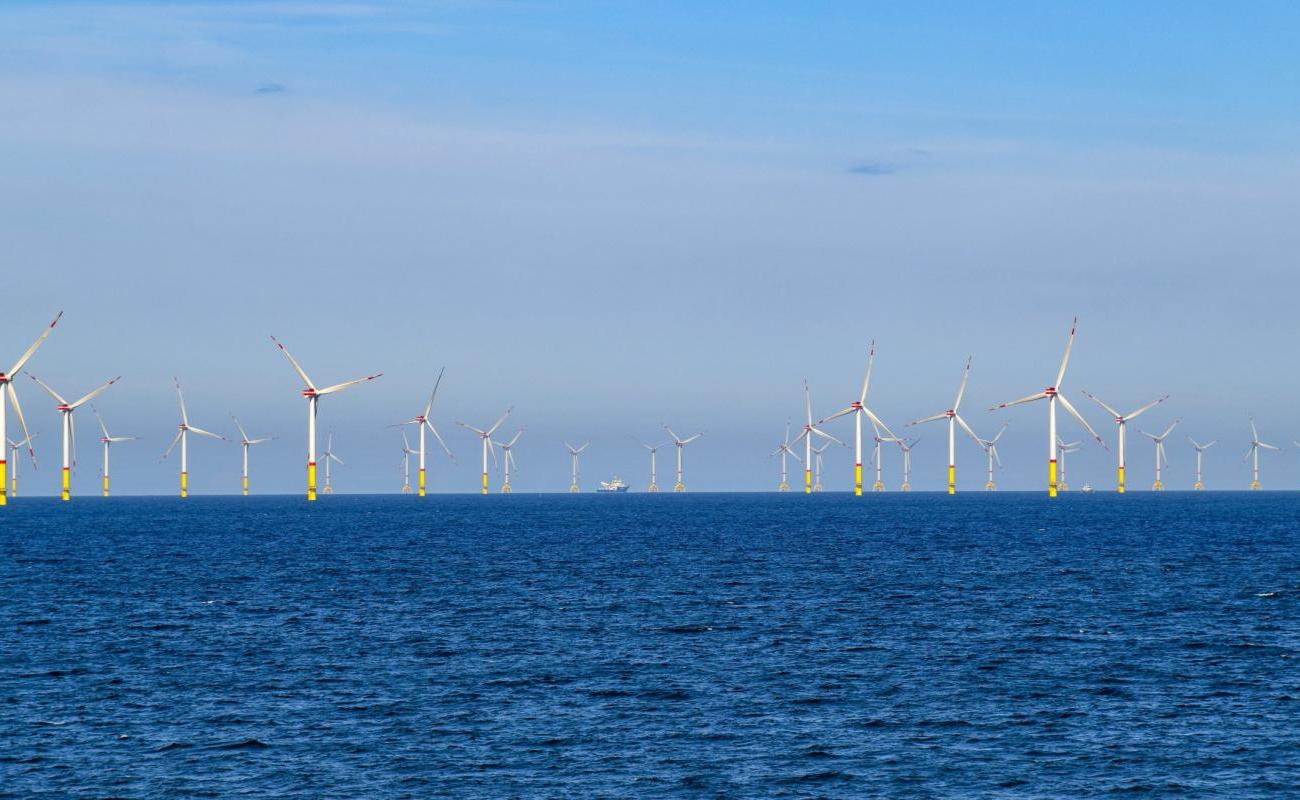Europe’s wind farm army

Twelve nautical miles out to sea from the town of Łeba on Poland’s coastline, the first of 76 new wind turbines are beginning to pierce the fog.
The Baltic Power project will be one of the country’s biggest offshore wind farms, generating enough electricity for 1.5 million homes. But its contribution to Europe’s security goes beyond supplying power. The 120-metre towers are set to become sentinels, tirelessly scanning the brackish waters and leaden skies for hostile activity.
In this new Cold War, where spying and sabotage threaten Europe’s energy and communications infrastructure, and possibly even its territorial integrity, the potential of wind farms for military surveillance is lost on no one.
As the Polish state secretary for EU affairs, Ignacy Niemczycki, told Euractiv on a windy boat ride out to the site: "We are looking at infrastructure differently than we were one year ago."
Wake-up call
When Finland and Sweden joined in 2023 and 2024, defence analysts dubbed the Baltic Sea “Lake NATO”, with members of the military alliance effectively encircling it. But after three years in which the strategically important waters have been plagued by drones, spy ships, aerial stand-offs and blatant sabotage of power and communication cables, the moniker is starting to ring hollow.
There are only two strips of coastline on the Baltic that don’t belong to NATO; both are Russian, and the area is becoming a geopolitical flashpoint. Now, more than three years after Russian tanks rolled across the border into Ukraine, the military alliance is looking to rally the serried ranks of offshore wind turbines, like the Baltic Power project, to Europe’s defence.
When the Nord Stream 2 gas pipelines were blown up in 2022, it came as a harsh “wake-up call” to the European Union, says Julian Pawlak, a research associate at Hamburg military university (HSU). Western nations learned the hard way that they “do not have a complete awareness of the Baltic Sea maritime domain”.
The destruction last Christmas of the Estlink 2 undersea cable linking the Nordic electricity market to the Baltic power grid just before the latter cut ties with Russia was another rude awakening, and prompted NATO to set up a military operation in response.
Making more off wind
NATO has discussed dotting offshore energy infrastructure with surveillance tools for years. In the past, turning oil rigs into military bases has proven unfeasible for cost, security, and engineering reasons, Pawlak says.
That’s where wind turbines come in: They are tall, decentralised, and there are hundreds of them off the EU’s Baltic coast. Already, wind turbines are equipped with bird sensors and transponders signalling their whereabouts to submarines, says Pawlak.
Baltic Power – situated less than 200 kilometres from the Russian exclave of Kaliningrad – is equipping its new turbine towers with radars and sensors, following a security checklist drafted by Poland’s defence ministry, Marcin Godek, the wind farm’s operations and maintenance manager, explained in June.
"There is a perfect symbiosis between offshore wind turbines and coastal protection," says Kristof Verlinden, a reserve Belgian coast guard who runs offshore wind farms at the firm, Parkwind. For Verlinden, they are also "sentinels or forward bases looking at the situation 50 kilometres or more from the coast".
More eyes
Wind farms' growing importance also brings greater risk of attack.
“The threats to offshore energy infrastructure are very real,” says Giles Dickson, CEO of lobby group Wind Europe. “Assets are being attacked physically, not just cyberattacks," he added, pointing to several cable attacks in the Baltic Sea.
The Swedish government recently halted 13 offshore wind farm projects in the Baltic Sea citing “unacceptable consequences for Sweden's military defence” and interfering with the military. And turbines themselves have previously become the target of surveillance by the Kremlin.
Baltic Power mapped potential threats in the region before beginning construction.
They quickly fell victim to spoofing, where boats pretend to be someone or somewhere that they are not, and incidents of signals jamming meant plans needed to be overhauled, Godek said.
Faced with this new reality, WindEurope has hired ex-military personnel to liaise with NATO.
“You cannot build an offshore wind farm in Belgium now if you do not commit to high levels of data sharing with the military and also commit to host their hardware if they ask you to do so,” said Dickson.
Verlinden said Parkwind has the foundations for the coastguard to install multi-use sensors and detection systems. Employees go to the offshore turbines almost daily and report back any irregularities.
In Belgium, Parkwind holds joint exercises "to train, verify and demonstrate our readiness towards security threats" with the coast guard, Verlinden said. "And we are ready to share our data such as AIS data, cable DAS, give access to our seaward looking cameras."
But the prospect of a web of wind turbines sharing data among themselves, their operators and governments, also raises questions.
Pawlak pointed to the need for lawmakers to clarify whether operators should have access to any information they collect. Close collaboration with the military would raise legal questions that are “not completely clear”, he said.
Birdwatching
Edward Zakrajsek, who handles the European market at radar firm DeTect, said wind turbines have a long history of watching the surrounding area. “Birds were the first thing, but of course 10 or so years ago private drones hit the market and everyone can fly one now,” he says.
Radars are already “monitoring even individual birds with a 10-kilometre range 24 hours a day”, Zakrajsek said, adding that "drones are about the size of a bird”.
The more offshore wind farms that can be networked together, the better the surveillance data will be, and Zakrajsek said, “the further out they are the better”.
